Watch the playback on our Youtube
The 2nd episode kicked off on December 9th which invited 4 special guests including Prof. Mohamed Hamed, Dr. Simon Tsang, Prof Joan Vidal-Jove and Prof. Zhou Kun to share the clinical application and technology development of HIFU for the treatment of liver cancer, as well as Prof. Meng Zhiqiang and Prof. Yang Wuwei to discuss the safety and efficacy of HIFU therapy for pancreatic cancer.
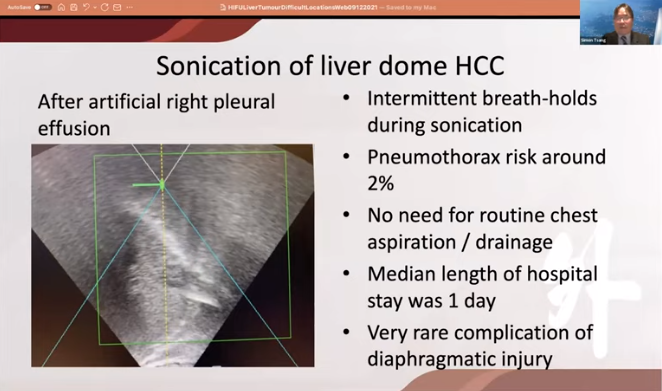
Dr Simon Tsang from the department of surgery at the University of Hong Kong gave a speech themed on High-intensity Focused Ultrasound Treatment of Liver Tumors in Difficult Locations. He first mentioned 6 treatment options for HCC, in which HIFU was included as an emerging and valuable one for small and advanced cirrhosis, and then introduced the eligibility and contraindications for HIFU. Subsequently, Dr. Tsang elaborated the difficult locations of liver tumors for HIFU ablation, with several cases of lesions in the liver dome as well as the ones close to vascular structures and portal pedicles. In his case demonstration, pre-operative and peri-operative preparations in terms of equipment setting, positioning, sonication and general anesthesia were fully presented, along with other tips and tricks. Dr. Tsang concluded that it was safe to ablate the tumors in some particular positions, and the treatment efficacy and the prognosis of patients with liver tumors following HIFU were quite pleasing.
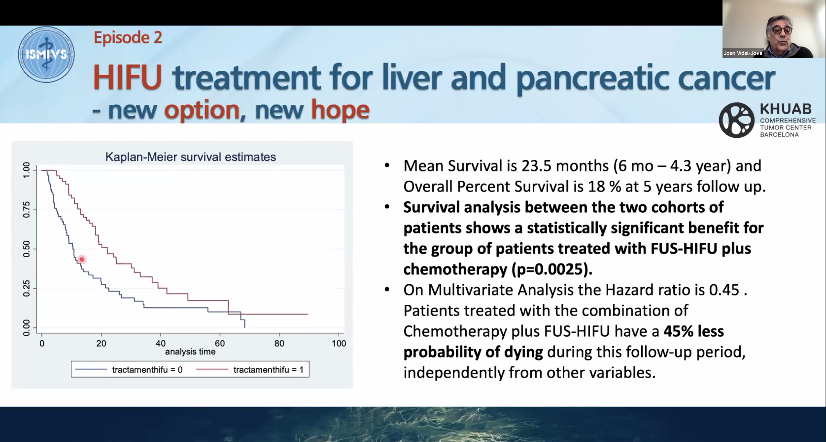
Prof. Joan Vidal-Jove, the surgical and interventional oncologist of the Comprehensive Tumor Center Barcelona and the Institution Khuab for Interventional Oncology, has performed over 250 oncological cases with HIFU in the last 12 years. He shared his experiences in tackling liver and pancreatic tumors in Spain and clarified some of the most difficult questions in this specific field. Then, he compared the clinical outcomes and survival curves before and after HIFU treatment in patients with liver and pancreatic tumors based on cohort studies. The results revealed that HIFU treatment or HIFU plus chemotherapy was indeed safe and effective, which indicated that it was the right path in such cases. Prof. Joan Vidal-Jove further shared his recommendations in the degree of ablation, reinforce strategies, combined therapies and ideal candidates for HIFU therapy. Prof. Vidal-Jove hoped that there could be a breakthrough both in the equipment and the treatment in the future.
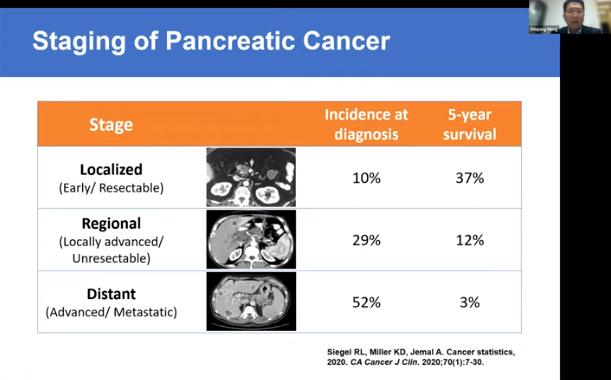
Prof. Meng Zhiqiang from the Minimally Invasive Treatment Center of Fudan University Shanghai Cancer Center (FUSCC) shared the exploration in his institution of HIFU treatment for pancreatic cancer. He indicated that only 10% pancreatic tumors were resectable and the 5-year survival rate was very poor even after the surgery, which was the main reason HIFU emerged as a new option for pancreatic cancer. After introducing the developing course of HIFU application for locally advanced pancreatic cancer (LAPC) in FUSCC from 2008 to 2019, including the initial success of pain relief in patients with high rate of survival and minus complications, further exploration of treatment for tumor with metastasis, safety evaluation by several HIFU cases, as well as the comparison with other local therapies such as RFA and irreversible electroporation (IRE), he concluded that HIFU appears to be the most attractive option to treat pancreatic cancer, especially pancreatic metastasis in the future, because it’s a repeatable technique with low risk and cost.
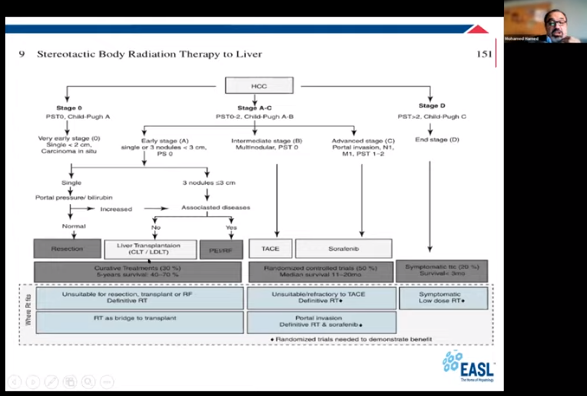
Prof. Mohamed Hamed from Cairo University, Egypt, discussed the local management of HCC. He mentioned that due to the difficulties regarding to the staging system, size and number limitation, as well as the vascular invasion, HIFU was recommended for the treatment of unresectable liver tumors. Through several case analyses, he indicated that HIFU was not only able to ablate the lesion in difficult locations, but also benefited the drug delivery process and the immune response. He further compared HIFU with liver tumour-intervention therapy for HCC and concluded that HIFU would bring a better result to the treatment of HCC with a lower distance, smaller size and less vascularity.
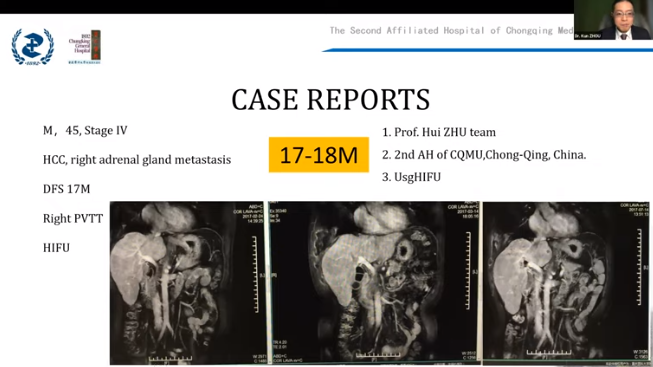
Dr. Zhou Kun, associate professor in the Second Affiliated Hospital of Chongqing Medical University, shared the surgery video of HIFU treatment for liver cancer. He first explained the different roles of HIFU and chemo therapy playing in the treatment for malignancies and shared 7 case reports in detail, for which the tumor recurrence and survival outcome of both small and large HCC were demonstrated. He then concluded that HIFU was one alternative local thermal ablation method that was safe for large blood vessels with no limitation for tumor size.
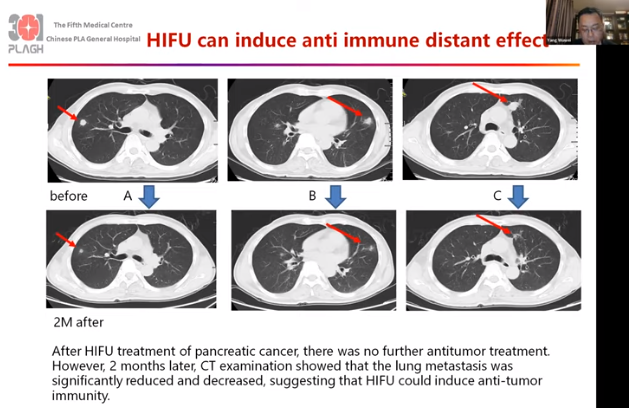
Prof. Yang Wuwei from the General Hospital of the People’s Liberation Army shared the application of HIFU for the treatment of progressive stage of pancreatic cancer. He indicated that there were 4 local ablation techniques for pancreatic cancer such as RFA, IRE, cryoablation (CA) and HIFU, which enjoyed the significances of tumor progression control, prolonged survival time, symptom alleviation and improving the quality of life. After elaborating the diversity of HIFU effects, he showed a case of a 48-year-old female with significant cancer pain whose pain score decreased from 7 to 2 after FUA treatment with a survival time of 18 months after combined chemotherapy. He believed that HIFU is valuable in the treatment of advanced pancreatic cancer and the comprehensive treatment strategy is worth exploring if it is combined with systemic therapy such as immunotherapy.


 +86 23 67886199
+86 23 67886199
